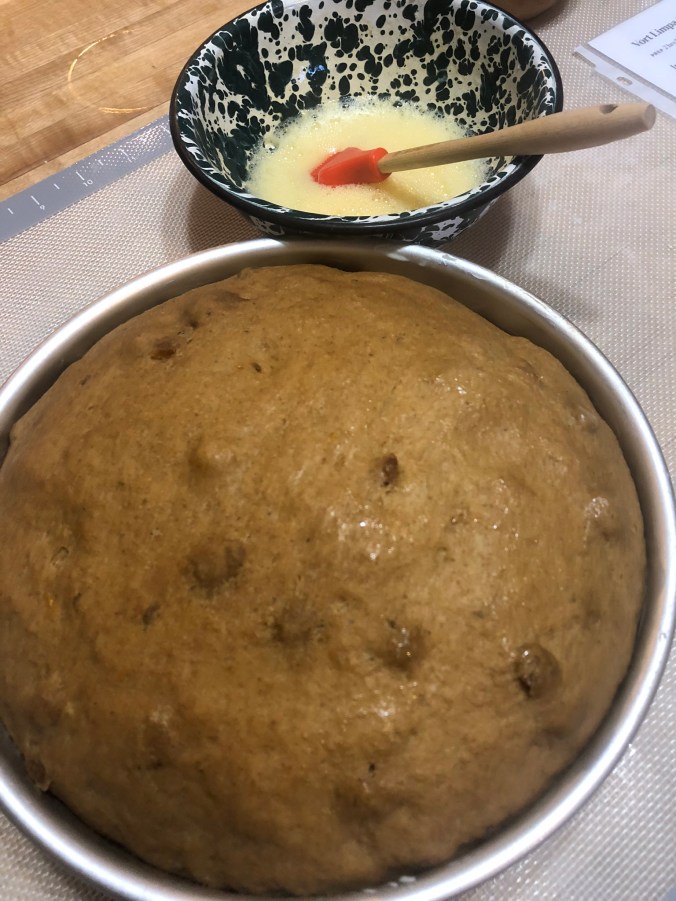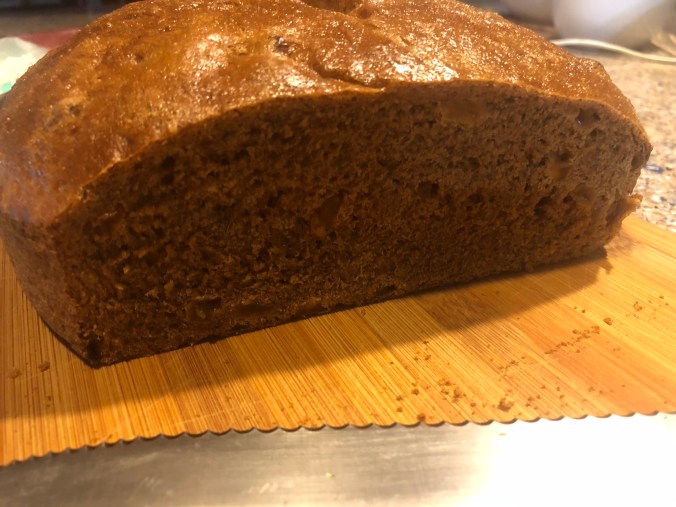
Another pandemic baking experiment. Yesterday I made a loaf of Swedish limpa, not to be confused with Finnish limppu. Bread is a Finnish staple. There is always bread on the table for every meal and I’m sure the same is true for the Swedes. My grandmother made limppu, occasionally wheat bread, and, of course, the sweeter cardamom braids on a regular basis. I have my grandmother’s bread bowls and I always use them when I make bread. I like to think they give me an edge. I grew up in a household of bread lovers. My grandfather and my dad had bread with every meal. Some of my brothers still carry on that tradition. The Finnish limppu is always baked in a round loaf, is dark, dense, heavy, and on the dry side. A little bakery near my hometown in the UP of Michigan, the Trenary Home Bakery, makes a great limppu bread. My dad liked his limppu toast in the mornings with his coffee and I would frequently buy a loaf or two to bring home when I visited. The recipe that I used yesterday is another King Arthur bread recipe and it is for Limpa, the Swedish Rye. To be honest, I don’t think I’ve ever had the Swedish variety before. The consistency is moister and lighter than the Finnish bread and, since it calls for currents, dark beer, and molasses, it has a sweeter, malty flavor. Neither the Finnish or the Swedish rye is what you would imagine for a Reuben sandwich, but the limpa tasted great this morning with a little smoked salmon. After baking all of the sour doughs that require a couple of days to completion, this loaf came together rather quickly.
Ingredients:
1/4 cup orange juice
1 cup currants
3/4 cup lukewarm water
1/2 cup dark beer at room temperature
3 T molasses
2 tsp instant or active dry yeast
1 T grated orange zest
2 T unsalted butter at room temperature
1 tsp salt
1/4 tsp ginger
1/2 tsp fennel, anise, or caraway seeds
1 1/2 cup (156g) rye flour
3 cups (361g) AP flour

Pour the orange juice over the currants and let them soak while you measure the remaining ingredients. In a large mixing bowl combine water, beer, molasses, yeast, orange zest, butter, salt, ginger, and seeds. Add the rye flour and mix thoroughly. Pour in the orange juice that the currants were soaking in. Set the currants aside for now.

Add the AP flour, one cup at a time, mixing until the dough thoroughly absorbs the flour. If you are mixing by hand set aside 1/2 cup of the flour for your work surface and hands as you knead. Mix in the currants. Shape the dough into a ball and place in a greased bowl.

Cover the bowl with a clean kitchen towel and let it rise for 1 1/2 hours or until puffy. Deflate the dough, reshape it into a ball, and place it in an 8” round cake pan that has been generously greased. Allow the dough to rise for 45 minutes to an hour until puffy but not doubled in size. Halfway through the rise, preheat the oven to 375. Whisk an egg with 1 T of water and brush the loaf with the egg wash. Make a 1/2” deep cross in the top.

Bake the loaf for 40-45 minutes, tenting loosely with foil after 20 minutes, to prevent it from browning too quickly. When a digital thermometer inserted into the center reads 190 degrees remove it from the oven. Tip the bread out of the pan and place it on a wire rack to cool.

Once the bread has cooled, slice and enjoy.

Store, well wrapped, at room temperature for three days or freeze for longer storage.
NOTE: I thought I had currants but did not so I substituted golden raisins. Research told me I could have also substituted pitted, chopped dates or soft prunes. If you don’t like dark beer (I do not) it’s fortunate a lot of groceries and party stores, at least in Michigan, sell beer by the bottle.